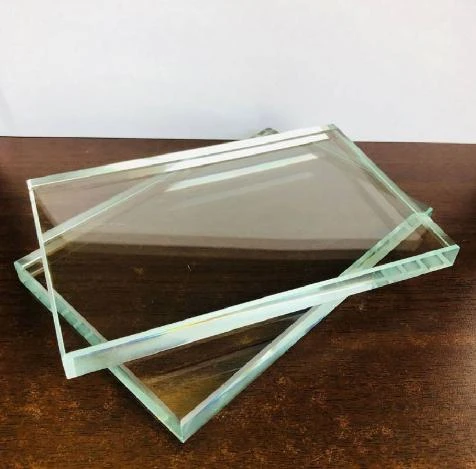The Importance of Obscure Safety Glass in Modern Architecture
In contemporary architecture and design, safety glass has gained significance due to its ability to enhance security, safety, and aesthetics. Among the various types of safety glass, obscure safety glass plays a unique role that deserves exploration. Obscure safety glass is characterized by its ability to limit visibility while maintaining a certain level of transparency, providing an ideal solution for various architectural applications.
Definition and Composition
Obscure safety glass is typically produced by applying a special treatment to standard glass to create a frosted or textured finish. This treatment can involve sandblasting, acid etching, or the application of a film. The result is a glass panel that diffuses light while obscuring details, making it challenging to see through. Importantly, this glass is also manufactured to meet safety standards; it may be laminated or tempered to prevent shattering and increase its durability.
Applications in Architecture
The use of obscure safety glass has expanded across different architectural applications. In commercial and residential buildings, it offers privacy in areas such as restrooms, conference rooms, or medical facilities. By using obscure glass, architects can create serene spaces that allow light to filter through without compromising the occupants' privacy.
Furthermore, obscure safety glass is beneficial in office environments, where it can be used in glass partitions. These partitions can help delineate spaces while still promoting an open and airy feel. The ability to maintain both privacy and communication is particularly valuable in modern workplaces, where collaboration and individual focus coexist.
In exterior applications, obscure safety glass can be utilized in windows and doors to provide security while obscuring the view from outside
. This is particularly advantageous in urban settings, where buildings may be in close proximity to one another. Moreover, it can serve as an aesthetic element, as the textured surface can add visual interest to façades without necessitating frequent cleaning or maintenance, a significant consideration in high-rise buildings.
obscure safety glass
Safety and Security Benefits
The safety advantages of obscure safety glass are paramount, especially in high-traffic areas. Its impact resistance means that, in the event of a breakage, the glass shatters into small, blunt pieces rather than sharp shards, significantly reducing the risk of injury. This makes it especially suitable for use in schools, hospitals, and public places where safety is a top priority.
Moreover, this type of glass can also enhance security by obscuring the view into interior spaces, deterring potential intruders from assessing the contents of a room or building. This can be a powerful deterrent in both residential and commercial contexts, allowing property owners to feel more secure in their environments.
Aesthetic Versatility
Aesthetic versatility is another compelling reason to consider obscure safety glass in design. Available in a range of textures and finishes, it can complement various design styles—modern, minimalist, or traditional. The interplay of light and shadow created by the textured surface can also impart a sense of warmth and depth to spaces, inviting occupants and visitors to engage with the environment actively.
Additionally, obscure safety glass can be used creatively in artistic installations, where the goal is to combine function and beauty. Designers can experiment with different finishes and patterns, leading to innovative applications that elevate architectural designs beyond mere functionality.
Conclusion
In summary, obscure safety glass represents a significant advancement in the field of architectural design, merging safety and aesthetics seamlessly. Its ability to provide privacy while allowing light to permeate spaces makes it a valuable component in both commercial and residential applications. As concerns about safety and security continue to rise, the adoption of obscure safety glass in modern architecture is poised to become even more prominent—making our environments safer, more beautiful, and more functional. Embracing this material allows architects and builders to realize designs that respect the surrounding context while addressing the practical needs of occupants, creating spaces that are both inviting and secure.
 Afrikaans
Afrikaans  Albanian
Albanian  Amharic
Amharic  Arabic
Arabic  Armenian
Armenian  Azerbaijani
Azerbaijani  Basque
Basque  Belarusian
Belarusian  Bengali
Bengali  Bosnian
Bosnian  Bulgarian
Bulgarian  Catalan
Catalan  Cebuano
Cebuano  Corsican
Corsican  Croatian
Croatian  Czech
Czech  Danish
Danish  Dutch
Dutch  English
English  Esperanto
Esperanto  Estonian
Estonian  Finnish
Finnish  French
French  Frisian
Frisian  Galician
Galician  Georgian
Georgian  German
German  Greek
Greek  Gujarati
Gujarati  Haitian Creole
Haitian Creole  hausa
hausa  hawaiian
hawaiian  Hebrew
Hebrew  Hindi
Hindi  Miao
Miao  Hungarian
Hungarian  Icelandic
Icelandic  igbo
igbo  Indonesian
Indonesian  irish
irish  Italian
Italian  Japanese
Japanese  Javanese
Javanese  Kannada
Kannada  kazakh
kazakh  Khmer
Khmer  Rwandese
Rwandese  Korean
Korean  Kurdish
Kurdish  Kyrgyz
Kyrgyz  Lao
Lao  Latin
Latin  Latvian
Latvian  Lithuanian
Lithuanian  Luxembourgish
Luxembourgish  Macedonian
Macedonian  Malgashi
Malgashi  Malay
Malay  Malayalam
Malayalam  Maltese
Maltese  Maori
Maori  Marathi
Marathi  Mongolian
Mongolian  Myanmar
Myanmar  Nepali
Nepali  Norwegian
Norwegian  Norwegian
Norwegian  Occitan
Occitan  Pashto
Pashto  Persian
Persian  Polish
Polish  Portuguese
Portuguese  Punjabi
Punjabi  Romanian
Romanian  Russian
Russian  Samoan
Samoan  Scottish Gaelic
Scottish Gaelic  Serbian
Serbian  Sesotho
Sesotho  Shona
Shona  Sindhi
Sindhi  Sinhala
Sinhala  Slovak
Slovak  Slovenian
Slovenian  Somali
Somali  Spanish
Spanish  Sundanese
Sundanese  Swahili
Swahili  Swedish
Swedish  Tagalog
Tagalog  Tajik
Tajik  Tamil
Tamil  Tatar
Tatar  Telugu
Telugu  Thai
Thai  Turkish
Turkish  Turkmen
Turkmen  Ukrainian
Ukrainian  Urdu
Urdu  Uighur
Uighur  Uzbek
Uzbek  Vietnamese
Vietnamese  Welsh
Welsh  Bantu
Bantu  Yiddish
Yiddish  Yoruba
Yoruba  Zulu
Zulu 

